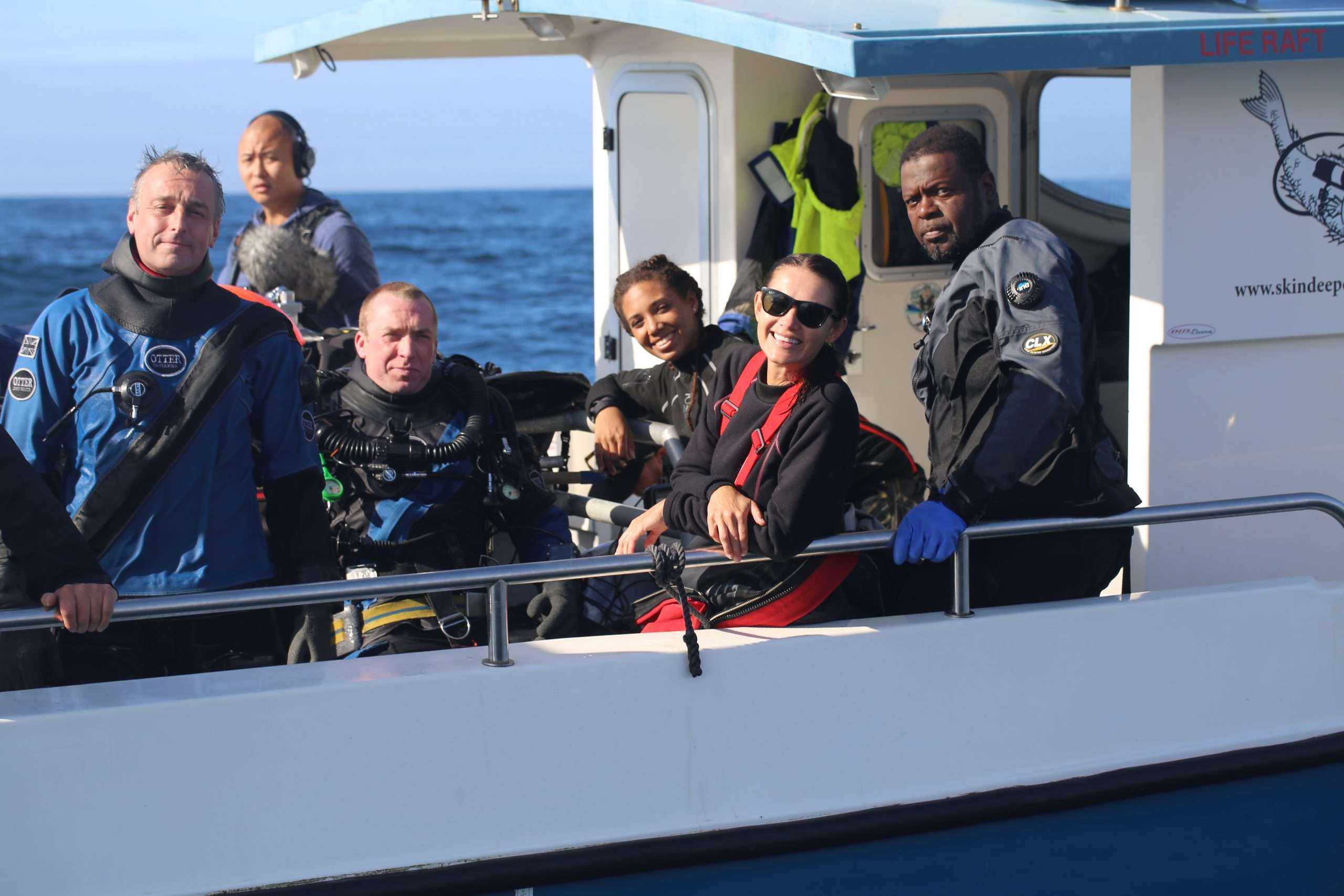on
BY SIMONE J. SMITH
“From our estimation, 12 million people were trafficked, more than two million died on route, and are buried at sea somewhere.” Samuel L. Jackson
The Atlantic Slave Trade is a part of history that has fascinated many. It might be because we know that Africans were taken, and sold, and then they were delivered to the Americas, but how much do we know about their journey over here? What happened during our ancestor’s journey, and what happened to those who did not survive?
Enslaved is a six-part investigation series Executively Produced and Featuring actor Samuel L. Jackson. It is co-presented by Award Winning Author and Journalist Afua Hirsch. Bringing even more power to the film is three-time Emmy-Award Filmmaker, Simcha Jacobovici. It debuted on October 18th, 2020 on CBC Television, and CBC Gem. The series aims to shed a light on 400 years of human trafficking from Africa to the Americas.
This powerful series was filmed across four continents, and features cutting edge, underwater technology. Intrigued viewers will be introduced to three separate story lines: the quest for a sunken slave ship, a personal journey by Jackson, and a historical investigation led by Afua Hirsch, and Simcha Jocobovici.
“We are actually looking at the site of one of the greatest crimes in history!” Afua Hirsch
Without giving too much away, I want to share some of the scenes found in the documentary. At one point, Afua and Samuel visit a church in Ghana where slaves were held hundreds of years ago. Heart-breaking details were shared about how the church was taken over by British colonists and turned into a protestant place of worship, and a place of unspeakable crimes.
In the governor’s bedroom, Afua explains to Samuel how African women were used as sex slaves. “There’s a trap door on the floor and it directly led down into the women’s dungeon.
One of them would be selected and walked straight up to the officer’s bedroom, washed because they were kept in a state of filth down there, and then he would rape her. He would have free access to these women and girls.”
I was introduced to this documentary by one of our most talented reporters Selina McCallum. Although she has moved on to investigate avenues of her creativity, she still finds time to share with us news that is relevant to the community. I unfortunately had an interview set up with Simcha, which didn’t pan out. It was difficult to connect for the interview because at the time he was in Israel.
Thankfully, I was able to speak with Kramer Wimberley, the lead diver in the documentary. He works along a diving team called Diving With a Purpose. They dive to find wrecked slave ships or/and what is left of them underwater.
In collaboration with the National Association of Black Scuba Divers (NABS), the team of brave divers search for and locate six slave ships that sank, drowning all enslaved humans aboard. They have made history filming Enslaved, for featuring the most dives ever made on sunken slave ships.
“The ocean holds stories that have never been told” Samuel L. Jackson
While dialoguing with Kramer Wimberley, I learned about his journey while making this documentary.
“Simcha and the team found me through Diving with a Purpose,” Kramer began.
“It was a fascinating experience. Sometimes we saw wrecks, and sometimes the conditions did not allow us to do so. Sometimes we would find things that looked like a coral reef, not realizing that we were diving through a sunken slave ship.”
He also spoke in-depth about the emotions he felt while filming.
“Different emotions came with each dive. Each dive told a different story
They all evoked different emotions.
There were some ships we studied in Costa Rica. The locals were conscious and aware of the direct link to their history. We were able to help them connect to their past.”
Kramer shared with me one of the most gruesome massacres that occurred in Suriname.
“The ship was going down, and the remainder of the slaves were forced below deck. They watched the ship go down and ensured everyone was dead. The inhumanity! The remains of the Africans are still there. It was both beautiful, and horrific.
These ships are out there. They have been for over 400 years. There were many that did not make it. We share similar visions with the producers. There are about 1,000 of these ships that need to be documented, and we are willing to document all of them.”
Our history is important, even the parts that are too ugly to talk about. You can assist in helping more of these stories come to life by first watching Enslaved, and donating to organizations like Diving With a Purpose. You can visit them at Divingwithapurpose.org.
Stay in the loop with exclusive news, stories, and insights—delivered straight to your inbox. No fluff, just real content that matters. Sign up today!
We, as humans are guaranteed certain things in life: stressors, taxes, bills and death are the first thoughts that pop to mind. It is not uncommon that many people find a hard time dealing with these daily life stressors, and at times will find themselves losing control over their lives. Simone Jennifer Smith’s great passion is using the gifts that have been given to her, to help educate her clients on how to live meaningful lives. The Hear to Help Team consists of powerfully motivated individuals, who like Simone, see that there is a need in this world; a need for real connection. As the founder and Director of Hear 2 Help, Simone leads a team that goes out into the community day to day, servicing families with their educational, legal and mental health needs.Her dedication shows in her Toronto Caribbean newspaper articles, and in her role as a host on the TCN TV Network.












